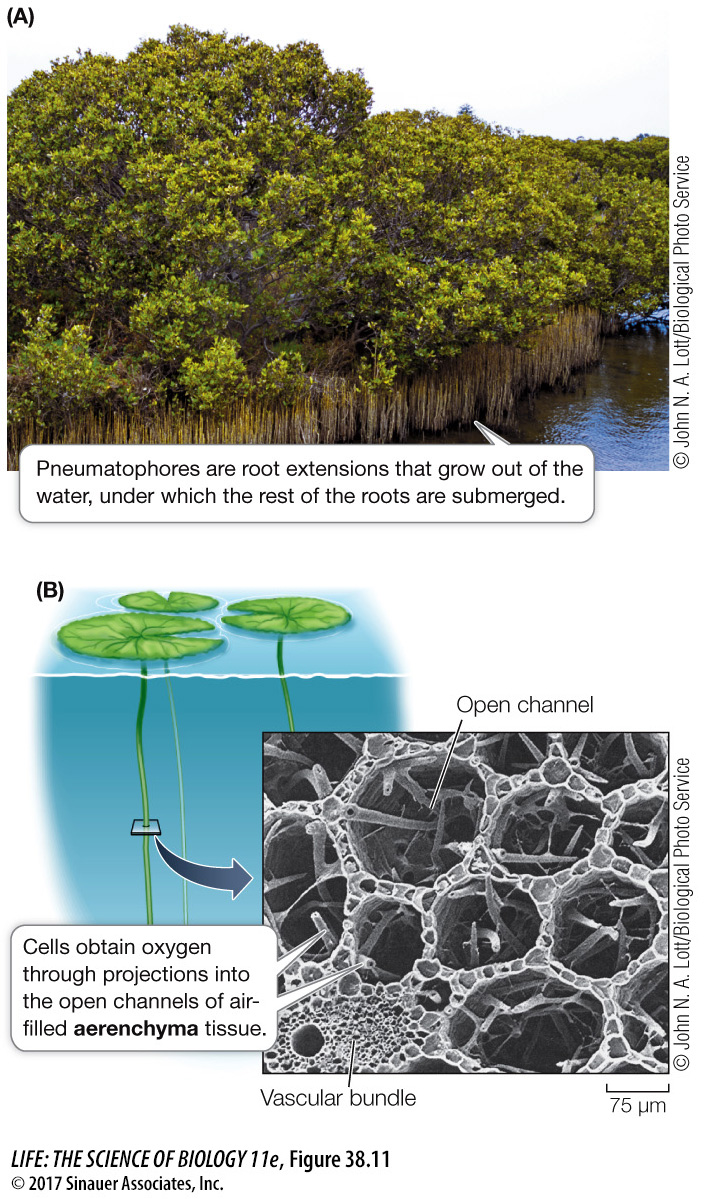Some plants grow in saturated soils
For some plants, the environmental challenge is too much water, the opposite of that faced by xerophytes. Some plants live in environments so wet that the diffusion of oxygen to their roots is severely limited. These plants have shallow root systems that grow slowly; oxygen levels are likely to be highest near the surface of the soil, and slow growth decreases the roots’ need for oxygen.
The root systems of some plants adapted to swampy environments, such as cypresses and some plants that grow in coastal mangrove habitats, have pneumatophores, which are extensions that grow out of the water and up into the air (Figure 38.11A). Pneumatophores contain lenticels (openings; see Figure 33.18) that allow oxygen to diffuse through them, aerating the submerged parts of the root system.

Many submerged or partly submerged aquatic plants have large air spaces in the leaf and stem parenchyma and in the petioles. Tissue containing such air spaces is called aerenchyma (Figure 38.11B). Aerenchyma stores oxygen produced by photosynthesis and permits its ready diffusion to parts of the plant where it is needed for cellular respiration. Aerenchyma also imparts buoyancy. Furthermore, because aerenchyma contains far fewer cells than most other plant tissues, metabolism in aerenchyma proceeds at a lower rate, so the need for oxygen is much reduced.
You may be familiar with rice paddies, where rice grows in a flooded environment. The strains of rice that thrive there—